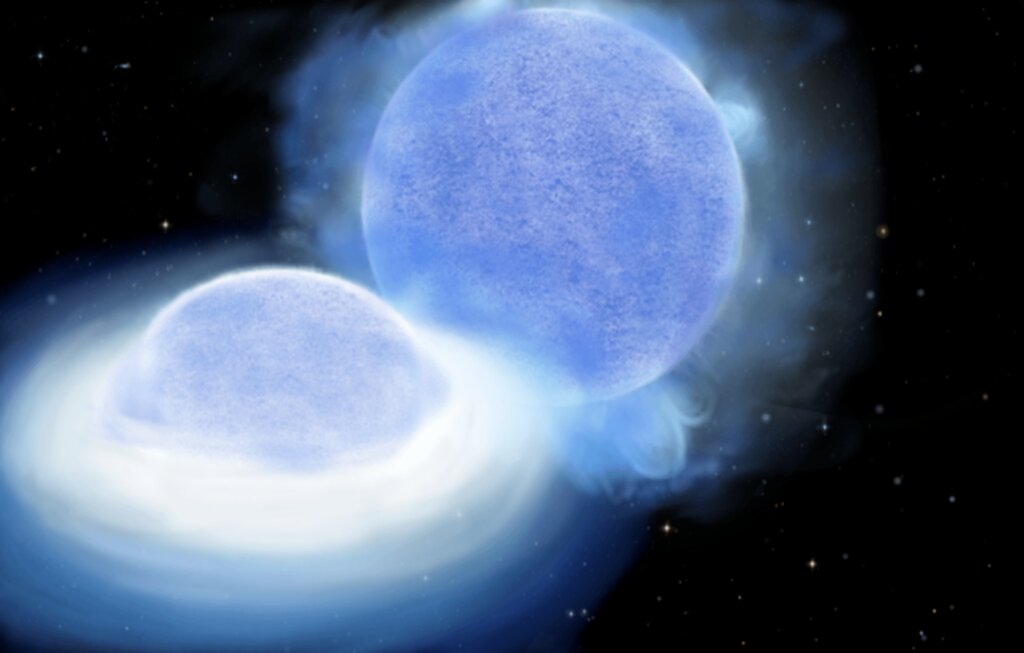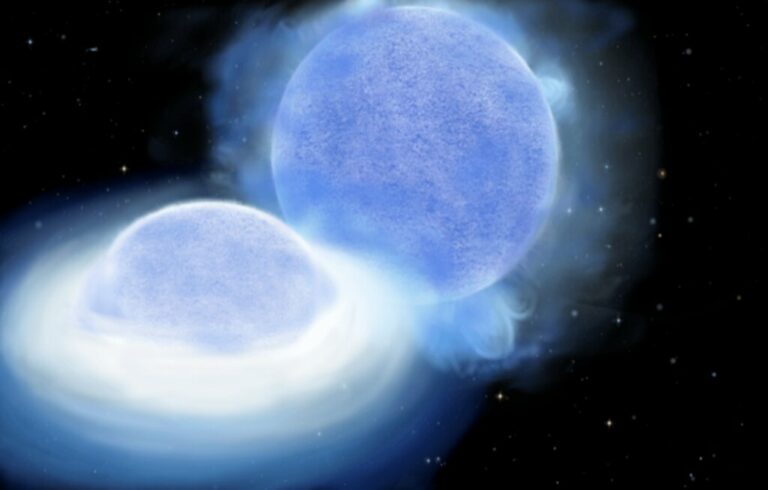Discovery of a Missing Evolutionary Stage Unveiled by a Supergiant Star
Dr. Varsha Ramachandran and her colleagues from Heidelberg University’s Center for Astronomy (ZAH) have made a significant breakthrough by discovering the first “stripped” star of intermediate mass. This discovery fills a crucial gap in our understanding of stellar evolution towards systems involving the merger of neutron stars, which play a vital role in explaining the origins of heavy elements like gold and silver. Dr. Ramachandran, a postdoctoral researcher in the research group led by Dr. Andreas Sander at ZAH’s Astronomisches Rechen-Institut (ARI), recently published these findings in Astronomy & Astrophysics.

The research team identified the first representative of a predicted but previously unconfirmed population of intermediate-mass stripped stars. These “stripped stars” are stars that have shed most of their outer layers, exposing their hot and dense helium-rich cores formed through nuclear fusion of hydrogen. The majority of stripped stars are formed in binary star systems, where one star’s gravitational pull causes it to strip and accrete matter from its companion.
While astrophysicists have long been aware of low-mass stripped stars known as subdwarfs and their massive counterparts called Wolf-Rayet stars, the existence of intermediate-mass stripped stars has remained elusive until now, leading to questions about the accuracy of existing theoretical models.
Using high-resolution spectroscopy instruments on the Very Large Telescope (VLT) at the European Southern Observatory in Chile, Dr. Ramachandran and her colleagues examined hot and luminous stars, eventually identifying peculiar signatures in the spectrum of a previously classified hot, massive star. Further analysis revealed that the object is not a single star but rather a binary system consisting of the intermediate-mass stripped star and a fast-rotating companion known as a Be star. The Be star had been spun up by accreting mass from the progenitor of the stripped star.
This binary system is located within the Small Magellanic Cloud (SMC), a neighboring dwarf galaxy. Stars in the SMC exhibit lower metallicity, meaning they have fewer heavy elements, compared to the massive stars in our Milky Way. Consequently, the metal-poor massive stars in the SMC provide valuable insights into the history of our own galaxy and the chemical evolution of the universe.

Dr. Ramachandran pursued her undergraduate studies in India before relocating to Potsdam, Germany, to pursue her Ph.D. Since September 2021, she has been conducting research at ZAH/ARI. “Our discovery confirms the existence of the long-sought population of such stars. However, our findings also indicate that they may exhibit unexpected characteristics,” explains Dr. Ramachandran. Contrary to previous expectations of completely stripped stars, it appears that these stars retain a small yet significant amount of hydrogen above their helium cores, causing them to appear larger and cooler than their true nature.
As a result, Dr. Ramachandran refers to them as “partially stripped stars.” Dr. Andreas Sander highlights that this remaining hydrogen mantle serves as a form of camouflage. “Partially stripped stars closely resemble normal, non-stripped hot stars, effectively concealing their true identity. Only high-resolution data, coupled with meticulous spectral analysis and sophisticated computer models, can unveil their actual nature.”
The elusiveness of these stars is not surprising. “This star’s telltale characteristic was its mass, which, despite its appearance as a blue supergiant, was only a few times more massive than our sun. While that might seem substantial, it is remarkably light for its appearance,” explains Dr. Sander, leader of the research group.
Dr. Jakub Klencki, an independent research fellow at the European Southern Observatory (ESO) and co-author of the research paper, emphasizes that the newly discovered system serves as a critical link in the evolutionary chain connecting different types of exotic objects. “According to our stellar evolution models, in approximately a million years, the stripped star will undergo a stripped-envelope supernova, resulting in the formation of a neutron star remnant,” states Dr. Klencki.
This discovery by Dr. Ramachandran and her colleagues represents the first observation of such a stripped star in a galaxy with low metallicity. If the binary system survives the supernova explosion, the roles of the two stars will reverse: the Be-star companion will transfer mass to the accreting neutron star, transforming into a Be X-ray binary.
These intriguing systems are considered progenitors of double neutron star merger events, which are among the most extraordinary cosmic phenomena observed thus far and responsible for the creation of elements like silver and gold. Understanding their formation processes represents a significant challenge in modern astrophysics, and observations of intermediate evolutionary stages play a crucial role in achieving this understanding.
“Our discovery adds a crucial piece to the puzzle, providing direct insights into the mass transfer evolution in such massive star systems,” concludes Dr. Ramachandran.
Do not forget to share your opinion with us to provide you with the best posts !




0 Comments